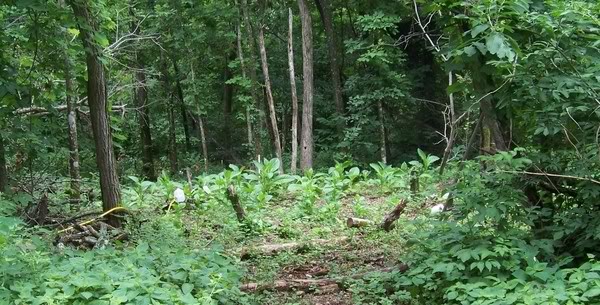Forest Gardens
It could be seen as being sympathetic to our environment yet also gaining a return from the land.
 Image: Sam Morris
Image: Sam Morris By Sam Morris
Permaculture practitioner/dog rescuer/freelance writer and more..
If most land is left to its own devices in our temperate northern climate it will ultimately become woodland or forest. This is the ‘climax’ vegetation so to speak. This is what nature is generally moving towards if there is little or no human intervention.
At the other end of the scale is arable land or land that is cultivated annually. This type of land requires lots of energy to maintain, has a low resistance to climate and seasonal variations, has little inherent diversity and has high maintenance costs which result in high greenhouse emissions from hungry machinery. The woodland is the total opposite requiring very little energy to maintain (almost none), is very resistant, has high levels of diversity and can be left to develop on its own. To a certain degree annual cultivation is a battle against nature. This is why, in my search for self-sufficiency, I have adopted a forest garden approach to food production.
A forest garden is like young woodland. It could be placed at one stage below high forest or wild nature if we look at a scale from arable land, to pasture, then moving on to orchards, and then a forest garden. Each step is moving closer to the natural push of a temperate environment. It could be seen as being sympathetic to our environment yet also gaining a return from the land. In the same way that you can encourage ladybirds and lacewings to deal with your pest on a vegetable plot, I am attempting to establish a system that can manage itself. There is an initial expense of energy as I plant up trees and perennials. A system of canopy, small trees, shrubs, perennial and herbaceous groundcover must be developed. Yet over time I hope the system can maintain itself.
Forest gardens are not a new idea. There is evidence that forest gardens have existed in the tropics for over twelve thousand years. They are also environmentally beneficial. The soil, being undisturbed once established, sequesters CO2, as do the trees and shrubs. There are little greenhouse emissions. The structure of the soil is maintained helping to store water and protect the land from erosion and flooding. They are also wonderful havens for wildlife. Another aspect which appeals to me is that once developed they require very little ongoing drudgery, unlike the yearly toil of annual vegetables.



No comments yet.